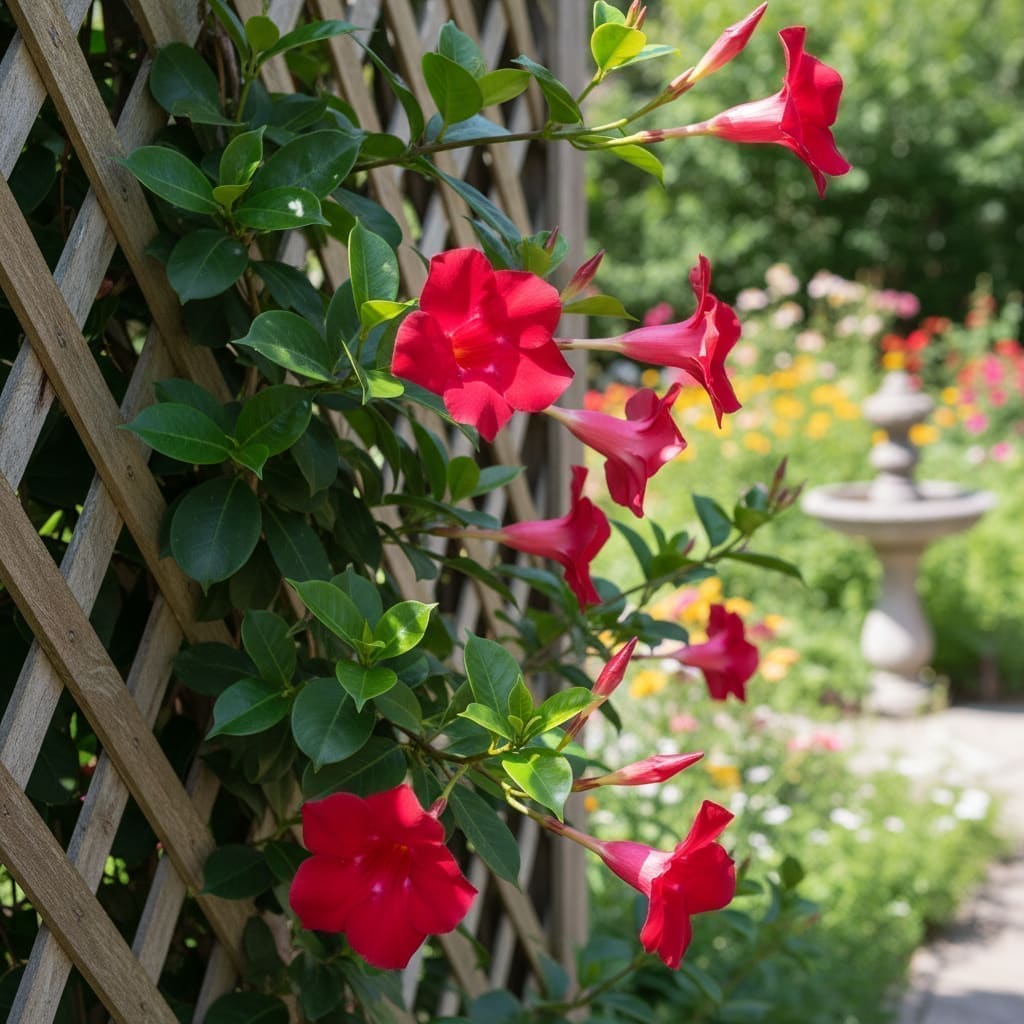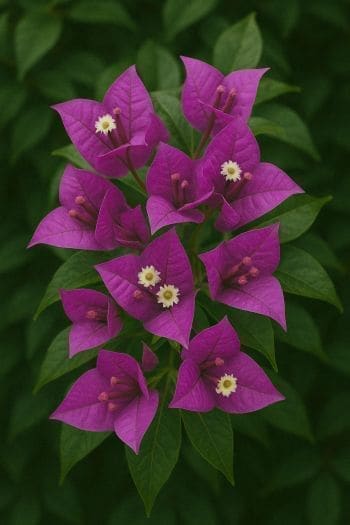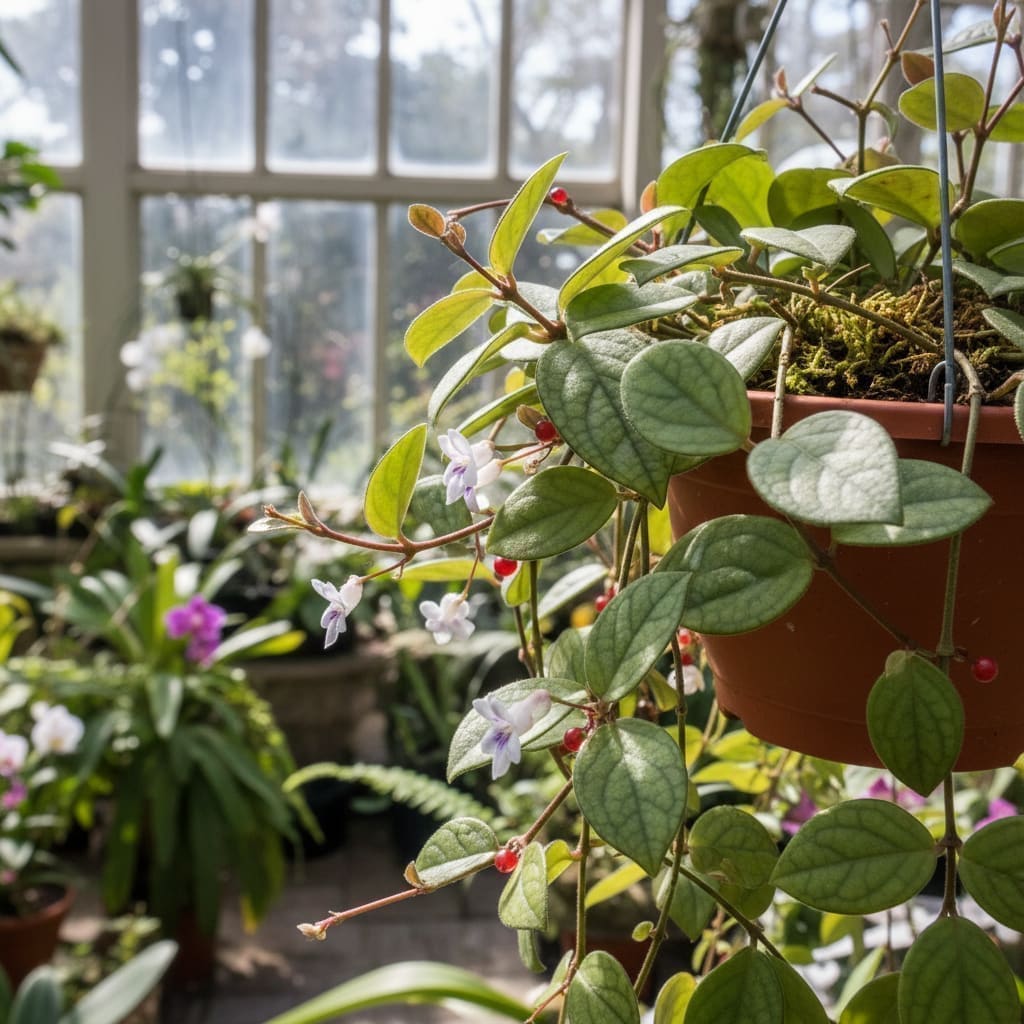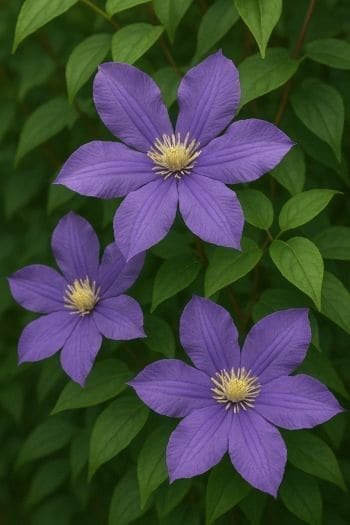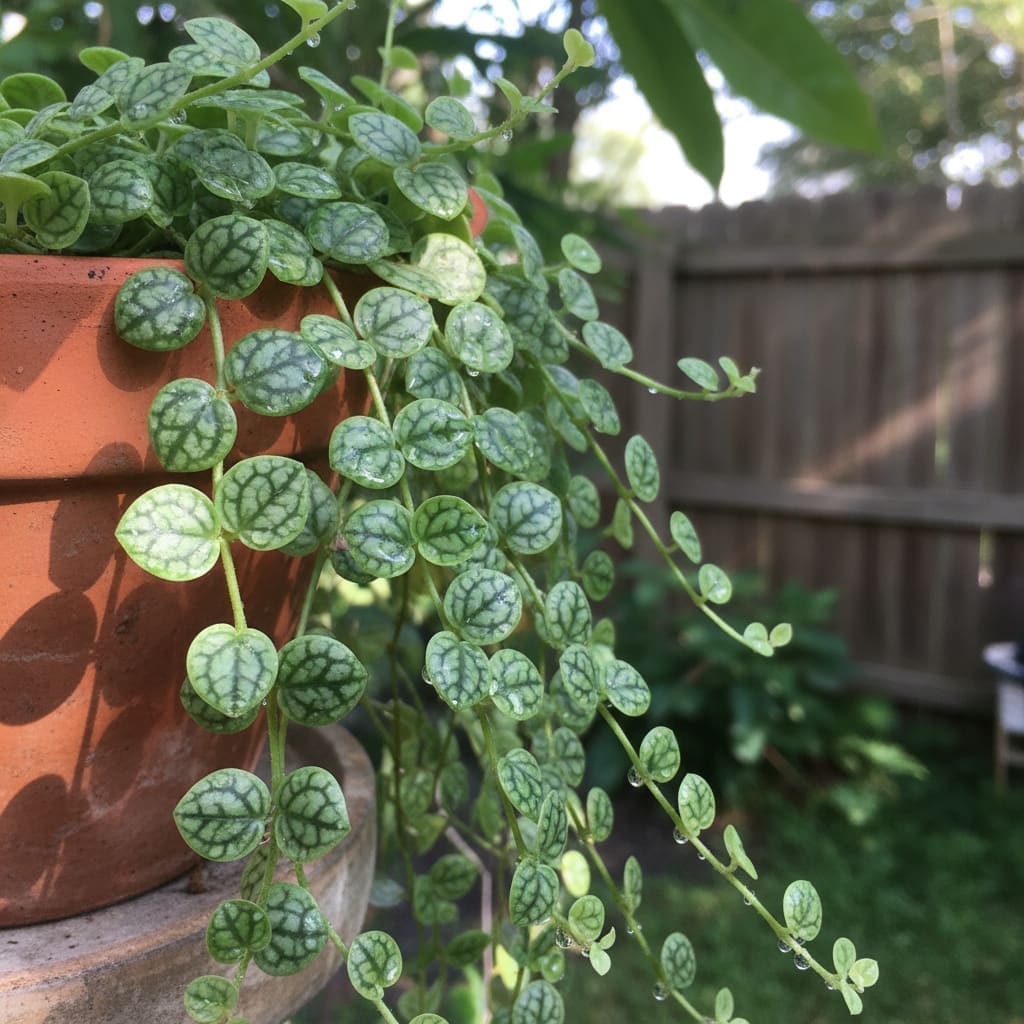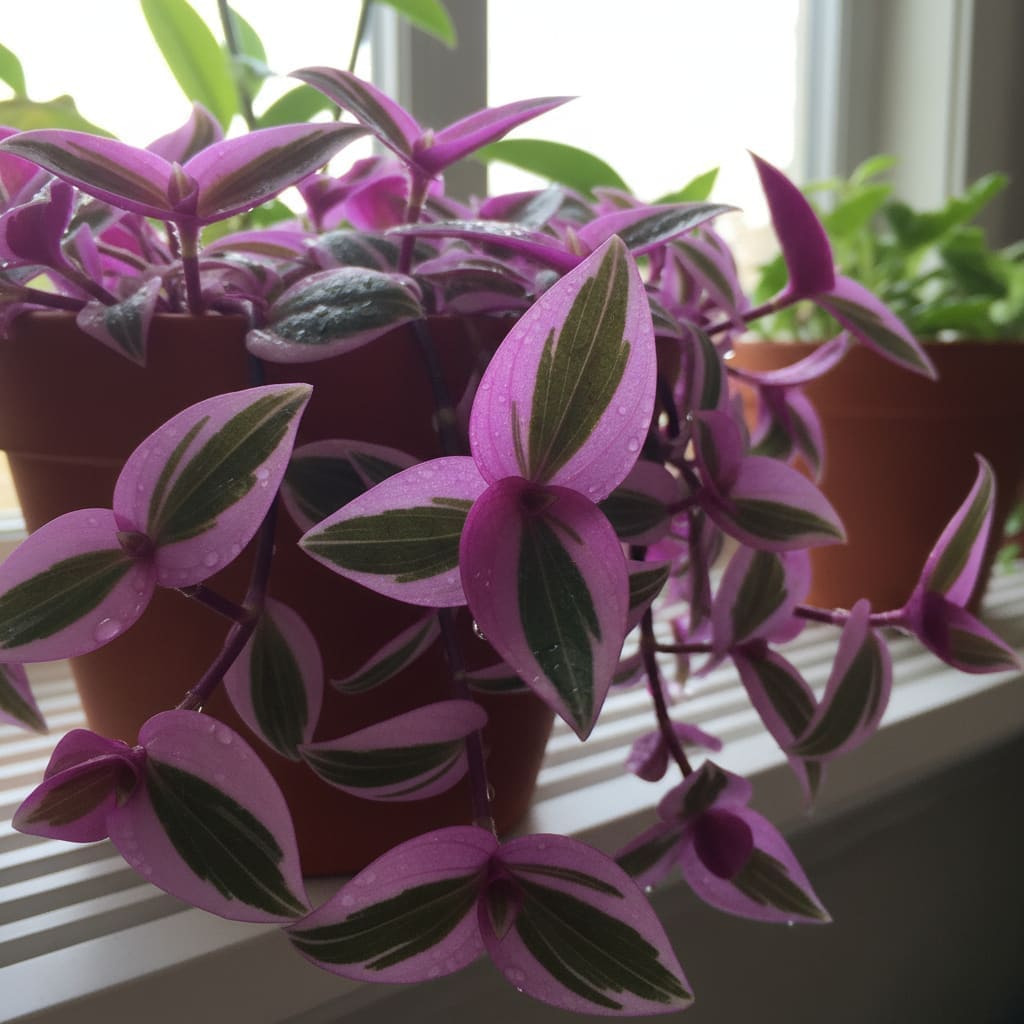Mandevilla (Mandevilla spp.) Care & Growing Guide
Overview
Mandevilla is a genus of tropical and subtropical flowering vines native to Brazil and other parts of South America. Known for their showy, trumpet-shaped blooms in shades of pink, red, and white, Mandevillas are popular in gardens, patios, and as indoor container plants. They are valued for their long blooming season, vigorous growth, and ability to climb trellises or cascade from hanging baskets.
These plants thrive in warm, humid conditions and can be grown outdoors year-round in frost-free climates, or as seasonal or overwintered indoor plants in cooler regions.
Identification & Growth Habit
Mandevilla vines are evergreen in their native range but may behave as annuals in cooler climates. They have glossy, dark green, oval-shaped leaves and produce large, funnel-shaped flowers. Growth is typically trailing or climbing, supported by twining stems that wrap around supports such as trellises, arbors, or moss poles.
Depending on the species and cultivar, Mandevilla can reach 6–15 feet in length during a single growing season under optimal conditions.
Light & Placement
Provide bright, indirect light for optimal growth. Outdoors, Mandevilla thrives in full sun but benefits from some shelter from intense afternoon rays, especially in summer. Indoors, place near a south- or west-facing window with filtered light. If light is insufficient, flowering may be reduced.
- Outdoors: Morning sun with afternoon shade in hot climates.
- Indoors: Bright room with at least 6 hours of indirect sunlight daily.
Watering & Humidity
Keep the soil consistently moist but not soggy. Water deeply when the top inch of soil feels dry to the touch. Reduce watering in winter when growth slows.
High humidity (above 50%) supports healthy foliage and flower production. Mist leaves regularly, group plants together, or use a humidifier. Outdoors in humid climates, supplemental misting is usually unnecessary.
Soil & Repotting
Use a well-draining potting mix rich in organic matter. A blend of peat moss, perlite, and compost works well. Ensure containers have ample drainage holes to prevent root rot.
Repot in early spring if roots fill the container. Select a pot only slightly larger than the current one to avoid excessive soil moisture retention.
Fertilizing
Feed every two weeks during the growing season (spring to fall) with a balanced liquid fertilizer diluted to half strength. Alternatively, apply a slow-release fertilizer in early spring and supplement with compost mid-season. Avoid over-fertilizing, which can promote foliage growth at the expense of flowers.
Pruning & Training
Prune in early spring to encourage bushier growth and remove any dead or damaged stems. Light pruning during the season can help maintain shape and direct growth.
Train Mandevilla to climb a trellis, arbor, or moss pole by gently tying stems with soft plant ties. Without support, stems will trail and may become tangled.
Propagation
Stem Cutting Method
- In spring or early summer, select a healthy, non-flowering stem.
- Cut a 4–6 inch section just below a leaf node.
- Remove the lower leaves, leaving 2–3 leaves at the top.
- Optional: Dip the cut end in rooting hormone.
- Insert the cutting into a moist, well-draining potting mix or place in water.
- Maintain high humidity and bright, indirect light until roots develop (2–4 weeks).
- Transplant rooted cuttings into individual pots and care for as mature plants.
Common Problems
Pests
- Aphids: Small green or black insects on new growth. Treat with insecticidal soap or neem oil.
- Spider mites: Fine webbing and stippled leaves. Increase humidity and apply miticide if needed.
- Whiteflies: Tiny white insects that fly when disturbed. Use yellow sticky traps and horticultural oil sprays.
Diseases
- Root rot: Caused by overwatering and poor drainage. Remove affected roots and repot in fresh, well-draining soil.
- Powdery mildew: White powdery coating on leaves. Improve air circulation and treat with a fungicide labeled for ornamentals.
Toxicity & Pet Safety
Mandevilla is considered toxic if ingested by pets or humans. Keep out of reach of cats, dogs, and children, and wear gloves when pruning if you have sensitive skin.
Styling & Decor Tips
- Use as a focal point in a container garden with a decorative trellis.
- Pair with complementary flowering annuals for a vibrant summer display.
- Train along porch railings or pergolas for a tropical look.
- Grow in hanging baskets and allow stems to cascade for a softer effect.
Varieties & Cultivars
Popular species and cultivars include:
- Mandevilla splendens – Large pink flowers; vigorous growth.
- Mandevilla boliviensis – White flowers with yellow throats; slightly more compact.
- Hybrid cultivars – Available in red, pink, and white, often bred for compact habit or enhanced flowering.
Buying Tips & Maturity
When purchasing Mandevilla, look for plants with healthy, green foliage and no signs of pests or disease. Buds and some open flowers indicate the plant is actively blooming. Younger plants establish quickly, while mature specimens provide instant impact.
Seasonal Care
- Spring: Resume regular watering and feeding; prune to shape; repot if needed.
- Summer: Maintain consistent moisture; provide support for climbing; deadhead spent blooms.
- Autumn: Reduce feeding; prepare to bring indoors in cooler climates before temperatures drop below 50°F.
- Winter: Keep in a bright, cool room; water sparingly; expect slower growth and fewer flowers.
FAQ
- How long does Mandevilla bloom? In warm conditions, it can bloom from late spring through fall.
- Can Mandevilla survive winter outdoors? Only in USDA zones 9–11; elsewhere, bring indoors before frost.
- Does Mandevilla need a trellis? Yes, if you want it to climb; otherwise, it will trail.
- Why are my Mandevilla’s leaves yellowing? Causes include overwatering, nutrient deficiency, or sudden temperature changes.
- Is Mandevilla the same as Dipladenia? They are closely related; Dipladenia is a bushier form within the same genus.
Advanced Pruning & Training Techniques
For exhibition-quality displays, consider selective thinning to open the plant’s center, allowing more light penetration and air circulation. Pinch back vigorous tips during the growing season to stimulate lateral branching and denser foliage. Espalier training against a wall or lattice can create a flat, decorative form, while spiral training around a central pole offers a dramatic vertical accent for patios or conservatories.
Troubleshooting Scenarios
- No blooms despite healthy foliage: May indicate excessive nitrogen or insufficient light; switch to a high-phosphorus fertilizer and move to a sunnier location.
- Wilting in moist soil: Could be root rot; inspect roots and improve drainage.
- Leggy growth indoors: Increase light exposure or supplement with grow lights to encourage compact growth.
Pest & Disease Quick Reference
- Mealybugs: Cottony clusters on stems and leaf joints; treat with isopropyl alcohol swabs or systemic insecticide.
- Leaf spot fungi: Brown or black spots with yellow halos; remove affected leaves and apply a fungicide.
Companion Plant Ideas
Pair Mandevilla with heat-loving, drought-tolerant plants that complement its vibrant blooms. Consider lantana for a color contrast, sweet potato vine for trailing foliage, or ornamental grasses for texture. In containers, underplant with calibrachoa or verbena to create a layered, continuous display.
Do & Don’t List
- Do: Rotate containers periodically for even growth.
- Do: Use soft ties to avoid damaging tender stems.
- Don’t: Leave outdoors if frost is forecast.
- Don’t: Allow water to collect in saucers for extended periods.
